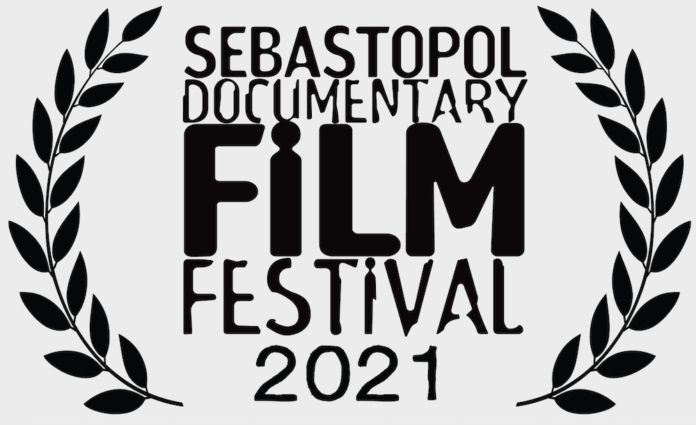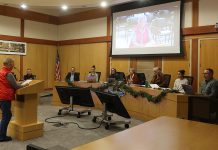The 14th annual Sebastopol Documentary Film Festival (SDFF) presents the human condition this week, streaming films from Sonoma County and all corners of the globe. This is the festival’s second year online in a row due to the pandemic.
Documentary devotees can still snag tickets here for the four-day festival running from 12:01 a.m. Wednesday, June 10 to 11:59 p.m. Sunday, June 13, though sales end that final afternoon, according to SDFF co-director and lead programmer Jean McGlothlin.
For $100, a VIP All Festival Pass grants access to all of the films, including five special panels and filmmaker conversations to watch. There’s also a five-film and panel bundle for $50 and single tickets on sale for $12, McGlothlin said.
The festival presents 67 films that made the cut out of at least 650 submissions from over 44 countries, including 33 feature-length documentaries, 28 shorts and 9 mini documentaries, according to information from SDFF 2021.
Moving pictures that might move you
“We like to think we bring a global perspective to our audience through personal stories. It’s the way we can best relate to one another,” McGlothlin said.
Among the diverse stories in this year’s festival explore issues related to social justice, the environment, war and more. “What seems to be of interest to us are the stories that involve how people live their lives with or against the prevailing challenges they have,” McGlothlin said.
“Documentary filmmakers aren’t out to make money,” she said. “Some of these people spend a decade putting a film together. It’s that important to them. Their motive is to have voices heard that don’t get the opportunity with all of the chatter that tends to black them out.”
McGlothlin called attention to “Wuhan Wuhan,” by filmmaker Yung Chang about how the COVID-19 outbreak impacted the lives of those at its early epicenter. “It’s really fascinating because the characters in it are ordinary people. It’s not a down, depressing thing, it’s just showing how people respond to this event, which became, of course, a global catastrophe,” she said.
“Queen Lear” was another standout in McGlothlin’s eyes. The film guide describes women in the mountains of southern Turkey who began giving theatrical performances of their life stories in their village 16 years ago.
“Now, they take to the road with an adaptation of Shakespeare’s King Lear, traveling on the dusty and risky roads to remote, forgotten villages in the mountains of Turkey that are hardly reached by drinking water,” recreated as “Queen Lear,” the festival’s film guide said.
McGlothlin said that SDFF issues an open-call for entries, so while Academy Award nominees are among the documentarians, “it could be somebody working on their MFA topic. Or it could be a local filmmaker, who’s done a film about a member of our community in the Black Lives Matter campaign that was done in Sebastopol.”
That particular film is called “The Rage Within,” a 15-minute documentary by Deborah Svoboda about Sebastopol youth activist Dezi Rae Kai, who organized a Black Lives Matter protest in the predominantly white city, and her experiences of racism and “anger over the racist, police murder of George Floyd,” per the film guide.
Docs aspiring for the Academy Awards
The Academy of Motion Picture Arts and Sciences approved SDFF as an Academy qualifying festival for documentary short subjects, according to the festival’s website.
McGlothlin said a jury committee made up of “industry professionals, filmmakers, distributors, professors,” and the like have selected the top film in each of the festival’s three categories — feature, 10- to 39-minute short documentary and mini-documentary under 10 minutes — to be announced on the first day of the festival.
The winning short and mini documentaries will both be eligible to enter consideration for the Academy Awards, McGlothlin said. The victorious feature documentary rakes in esteem and publicity to reach a wider audience and potentially attract a distributor to get into theaters, she said.
Meanwhile, audiences get to rate each film they watch and after the festival, the votes will be tallied for the best-ranked film in each of the three film categories — feature films, 10- to 39-minute shorts and mini-documentaries under 10 minutes — and the victors will receive a special award from the festival, McGlothlin said.
How to watch the documentaries
You can watch the festival on your laptop, but the film festival keeps it classic several ways, like no rewinds.
Once viewers buy a ticket or a pass, they can start watching at any time during the festival but have 48 hours to finish the film once they unlock the video, according to the SDFF 2021 website’s “How to Fest” page.
“And you can watch it once. You can pause it, but you can’t have it go back,” McGlothlin said. There aren’t unlimited tickets, either.
“I will say, it sounds funny, but seating is limited, and that’s because the film industry says you can show your film to as many people as your largest theater would hold,” McGlothlin said.
For SDFF 2021, the restriction determined each film can seat 300 people, regardless of whether they’re watching from the couch. “So, if people really want to see a film, they need to buy it and register fast,” she said.
The website’s “How to Fest” page also has info on how to access the films on a computer or TV with an HDMI cable, Apple TV, Roku or Chromecast.
Before COVID-19 struck, the event normally had 70 to 75 films moving across six screens at the
Sebastopol Center for the Arts and Rialto Cinemas with “a combined audience of 5,500-6,000 documentary film lovers, industry guests and fellow filmmakers from around the world, who travel to the fest with the support of the Franklin J. Schaffner Fund,” according to the organization’s website.
Why to watch the documentaries
McGlothlin said she believes documentaries are more important than ever.
“We have so much of an information dump on us, every day from the news media and so on. We’re losing our local newspapers, we have no way of determining what’s really happening out there and the stories that impact our lives,” she said. “And these stories are from real people in real circumstances. Some of them are glorious circumstances, some of them are terrible challenges to be frank. But it is the truth.”
McGlothlin continued, “We also live in an age where the truth gets erased pretty easily, so we need some sense of what real is so that we can make critical decisions about our future and the future of our planet.”
Peering into the future, she said the organizers intend to host the festival in person again at the Sebastopol Center for the Arts and Rialto Cinemas in 2022.
“And then Main Street will be buzzing, and we’ll have the crowds back and the filmmakers back and we’ll really have a festival to celebrate. Because it’s the fact that the whole town is buzzing and comes to life for this festival that we all cherish, including the filmmakers. They love coming here,” she said. “We’ll do what we can to make that happen.”









